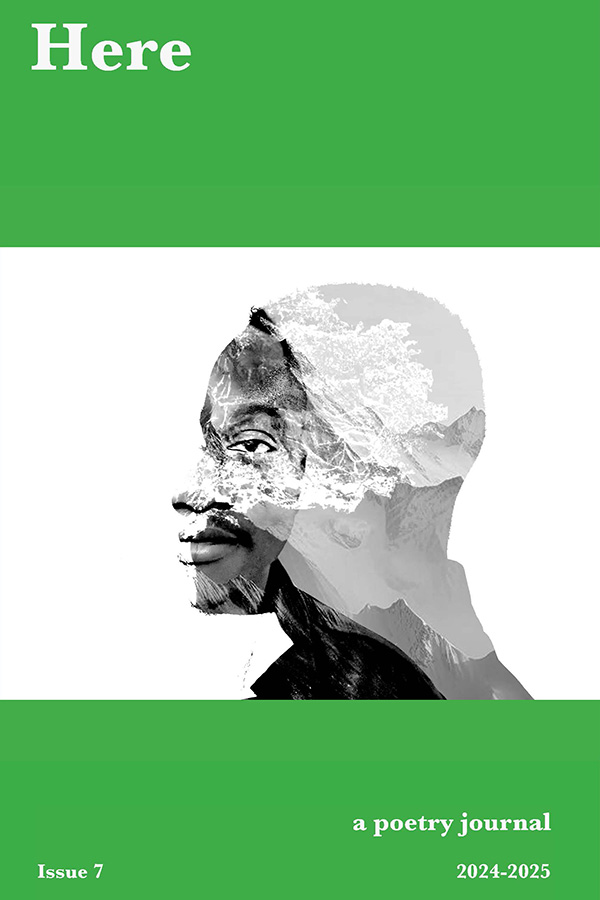- Apply
- Visit
- Request Info
- Give
'Here' poetry journal covers emotional trials and tribulations
Written by Elisabeth Craig
Published on May 07, 2025

Daniel Donaghy, professor of English at Eastern Connecticut State University, has curated works for the seventh issue of the “Here” poetry journal. The publication gets hundreds of submissions every year, with contributions ranging from local and international poets, including Eastern students.
“The contributor’s work speaks to ‘Here’s’ mission of bringing together essential voices, particularly those from traditionally marginalized communities, and sharing their stories with the world,” said Donaghy. “‘Here’s’ release caps a year of work that my editing students and I put into soliciting and selecting manuscripts from all over the world.”
Contributing poet Julia Paul wrote her poem “Elegy for my Son” to provide an avenue for a grief that’s nearly impossible to articulate.
“My oldest son, Brendan, died from an opioid overdose after a long struggle with substance-use disorder,” said Paul. “The death of a child is the worst thing a parent can experience.”
She continued: “The grief is profound and difficult to put into words. Poetry uses images and metaphor to say what is otherwise unsayable. The elegy as a form is the perfect vessel for grief.”
Sitara Gnanaguru’s poem “Parable of the Curry Tree” explores themes of immigration and parenthood through the perspective of Gnanaguru’s grandmother, who serves as the inspiration for many of her poems.
“She was watering her plants one summer day, and the conversation I reference in the poem about the heart-wrenching stories of family separation actually happened,” said Gnanaguru. “I have been published in four issues of the journal so far, and it is a pleasure to work with Dan and the student editors every time. I am honored to be a contributor again.”
Stephen Myers set the scene of his poem on the nostalgic landscape of the farmland he grew up on. In his poem, Myers paints a verbal picture of a barn adjacent to his house that he would play in frequently.
“You often hear poets acknowledge that they carry with them from their childhoods a set of images that intensify rather than fade with time and live powerfully in the imagination,” said Myers. “On the one hand, the barn served the purpose of play; one of the farmers put up a basketball backboard and net for me inside, so I had a rural, all-weather indoor court to come to many days after school or in the summer.”
He continued: “Many other days through the year I'd push the great sliding door open and walk in, and the barn seemed liked a cathedral in its stillness, its slanting light, and its whispers and murmurs in every corner — an abiding sense of the sacred I tried to convey in ‘The Barn.’”
English alum Daniel Patrick Carey Jr. ‘11 wrote his poem in a form known as “golden shovel” and was largely inspired by 20th-century Irish poet Seamus Heaney’s poem “Digging.”
“My goal in writing this poem was to bring to light my own father/son connection using form, style, and language that echoed Seamus Heaney,” said Carey.
“I was always drawn to the connection the speaker in that poem has to his father, yet moved by the juxtaposition between father’s and son’s work. It always reminded me of my own relationship with my father, a lifelong construction worker, and myself, a poetry-writing English major who then went into business and sales.”
Cait Turner’s poem “Raid Poem #2: After” is an excerpt from a longer work about her family’s life in the political atmosphere in her family’s neighborhood in Kensington, Philadelphia, PA. Her poem details the aftermath of a homeless encampment’s encounter with local law enforcement.
“I was inspired by the different bits of graffiti messages people here leave for one another, and the different ways and modes we communicate in during periods of crisis,” said Turner. “I'm very grateful to the team at ‘Here’ for publishing my work. It's a wonderful journal and I'm honored to be included therein.”


